the title says it all, I'm using the below code to create a PNG image of the graph

as you can see that the edges don't look good and the labels on the edges are intersecting/overlapping with each other, is there any way to increase the size of the image and automatically re-position the vertexes and edges to look somehow like this?

Here's the code I used
import javax.imageio.ImageIO;
import org.jgrapht.Graph;
import org.jgrapht.ext.JGraphXAdapter;
import org.jgrapht.graph.DefaultDirectedGraph;
import org.jgrapht.graph.DefaultEdge;
import com.mxgraph.layout.hierarchical.mxHierarchicalLayout;
import com.mxgraph.layout.mxIGraphLayout;
import com.mxgraph.util.mxCellRenderer;
import java.awt.Color;
import java.awt.Desktop;
import java.awt.image.BufferedImage;
import java.io.File;
import java.io.IOException;
import java.util.Objects;
public class DecisionTree
{
public static void main(String[] args)
{
Graph<Vertex, LabeledEdge> tree = new DefaultDirectedGraph<>(LabeledEdge.class);
int id = 1;
Vertex specialty = new Vertex(id++, "Specialty");
Vertex it = new Vertex(id++, "IT");
Vertex medicine = new Vertex(id++, "Medicine");
Vertex engineering = new Vertex(id++, "Engineering");
Vertex sociology = new Vertex(id++, "Sociology");
Vertex yesIt = new Vertex(id++, "Yes");
Vertex ageIt = new Vertex(id++, "Age");
Vertex yesAgeIt = new Vertex(id++, "Yes");
Vertex noAgeIt = new Vertex(id++, "No");
Vertex noMed = new Vertex(id++, "No");
Vertex ageMed = new Vertex(id++, "Age");
Vertex yesAgeMed = new Vertex(id++, "Yes");
Vertex noAgeMed = new Vertex(id++, "No");
Vertex noEng = new Vertex(id++, "No");
Vertex yesSoc = new Vertex(id++, "Yes");
Vertex noSoc = new Vertex(id++, "No");
tree.addVertex(specialty);
tree.addVertex(it);
tree.addVertex(medicine);
tree.addVertex(engineering);
tree.addVertex(sociology);
tree.addVertex(yesIt);
tree.addVertex(ageIt);
tree.addVertex(yesAgeIt);
tree.addVertex(noAgeIt);
tree.addVertex(noMed);
tree.addVertex(ageMed);
tree.addVertex(yesAgeMed);
tree.addVertex(noAgeMed);
tree.addVertex(noEng);
tree.addVertex(yesSoc);
tree.addVertex(noSoc);
tree.addEdge(specialty, it, new LabeledEdge(""));
tree.addEdge(specialty, medicine, new LabeledEdge(""));
tree.addEdge(specialty, engineering, new LabeledEdge(""));
tree.addEdge(specialty, sociology, new LabeledEdge(""));
tree.addEdge(it, yesIt, new LabeledEdge("Gender: F"));
tree.addEdge(it, ageIt, new LabeledEdge(""));
tree.addEdge(ageIt, yesAgeIt, new LabeledEdge("Age: >= 28"));
tree.addEdge(ageIt, noAgeIt, new LabeledEdge("Age: < 28"));
tree.addEdge(medicine, noMed, new LabeledEdge("Gender: F"));
tree.addEdge(medicine, ageMed, new LabeledEdge(""));
tree.addEdge(ageMed, yesAgeMed, new LabeledEdge("Age: >= 28"));
tree.addEdge(ageMed, noAgeMed, new LabeledEdge("Age: < 28"));
tree.addEdge(engineering, noEng, new LabeledEdge(""));
tree.addEdge(sociology, yesSoc, new LabeledEdge("Gender: F"));
tree.addEdge(sociology, noSoc, new LabeledEdge("Gender: M"));
JGraphXAdapter<Vertex, LabeledEdge> graphAdapter = new JGraphXAdapter<>(tree);
mxIGraphLayout layout = new mxHierarchicalLayout(graphAdapter);
layout.execute(graphAdapter.getDefaultParent());
BufferedImage image = mxCellRenderer.createBufferedImage(graphAdapter, null, 2, Color.WHITE, true, null);
File imgFile = new File("tree.png");
try
{
ImageIO.write(image, "PNG", imgFile);
System.out.println("Image created successfully!");
Desktop.getDesktop().open(imgFile);
} catch (IOException e)
{
System.out.println(e.toString());
}
}
}
class Vertex
{
int id;
String text;
Vertex(int id, String text)
{
this.id = id;
this.text = text;
}
@Override
public int hashCode()
{
return String.valueOf(id).hashCode();
}
@Override
public boolean equals(Object obj)
{
if (this == obj)
{
return true;
}
if (obj == null)
{
return false;
}
if (getClass() != obj.getClass())
{
return false;
}
final Vertex other = (Vertex) obj;
if (this.id != other.id)
{
return false;
}
return Objects.equals(this.text, other.text);
}
@Override
public String toString()
{
return text;
}
}
class LabeledEdge extends DefaultEdge
{
String label;
public LabeledEdge(String label)
{
this.label = label;
}
public String getLabel()
{
return label;
}
@Override
public String toString()
{
return label;
}
}